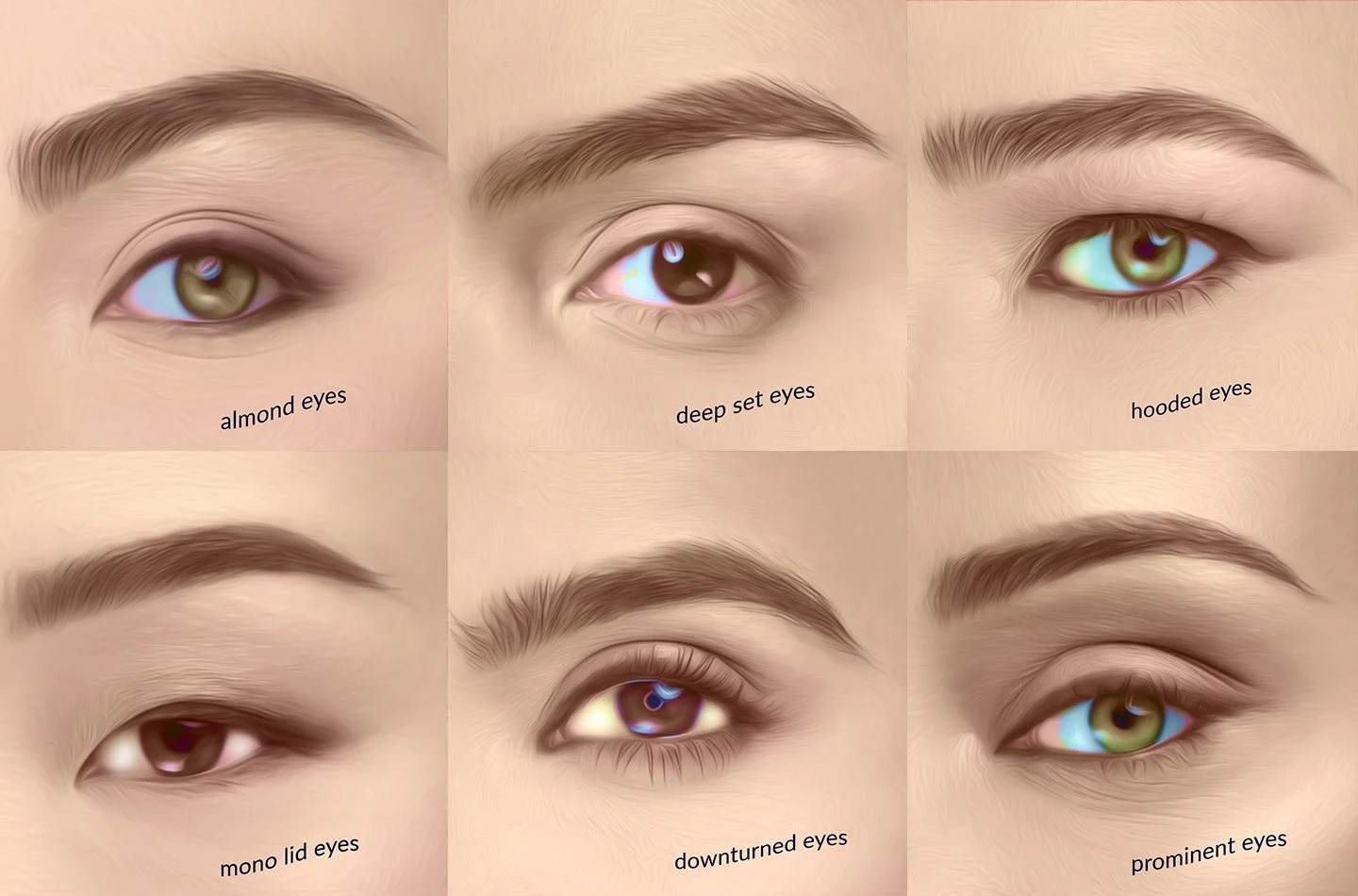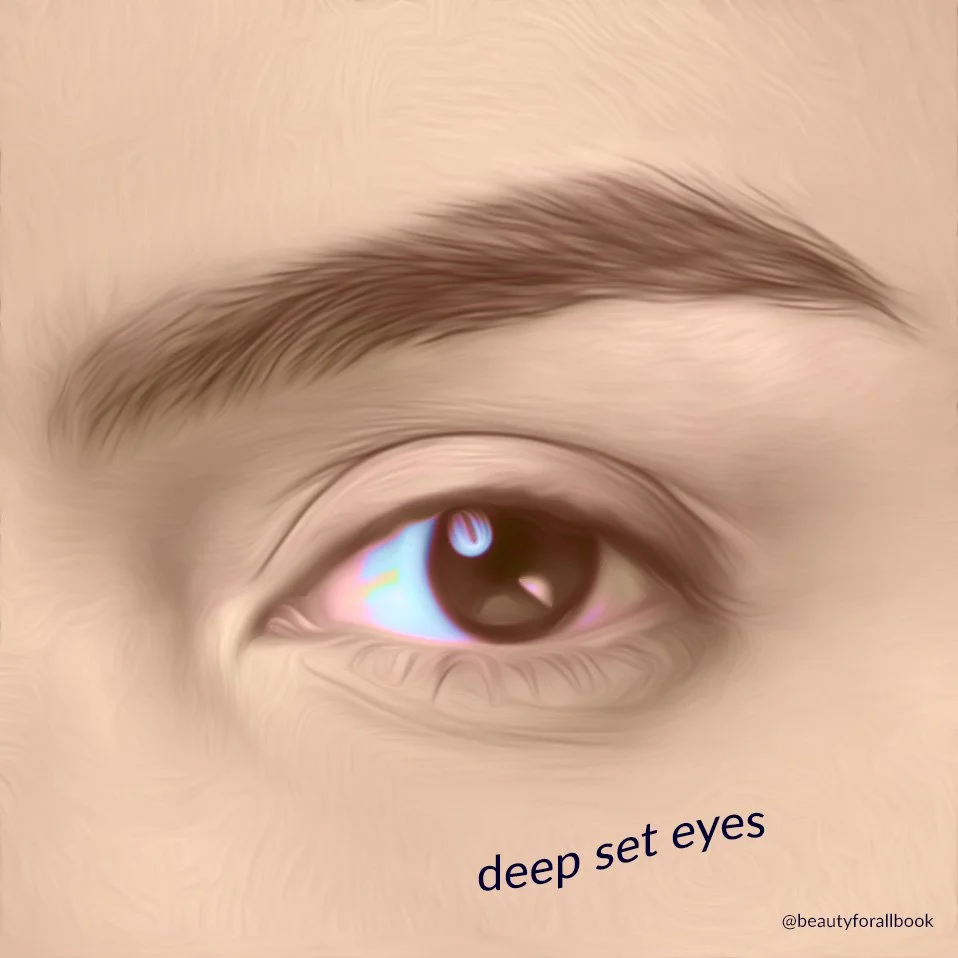What is your eye shape?
How to Determine Your Eye Shape
All eye shapes are beautiful, and once you know your own shape you’ll be able to accentuate the natural shape of your eyes with the right application of eye makeup. There are endless variations of eye shapes and one can have a blend of many. Everyone’s face shape is unique and defining one’s eye shape can be confusing.
Here are suggestions to help you determine your eye shape:
Mirror, Mirror: To determine your eye shape, place a mirror at eye level. Take a step back and look forward. This will give you the best view for determining your eye shape.
Observe The Crease: Start by determining if you can see an eye crease. If you cannot see your crease, you likely have monolid or hooded eyes.
If you can see the crease, consider the following:
Does the colored part of the eye have any white showing? You have round eyes.
Does the eye’s outer corner turn down? You have downturned eyes.
Does the iris touch the bottom and top of the eyelid? You have almond-shaped eyes.
Do the outer corners flick upwards? You have upturned eyes.
Is the crease blocked by a skin flap? You have hooded eyes.
Most Common eye Shapes
Almond eyes
A person with almond-shaped eyes has an iris that touches the eyelid on both the bottom and the top. They have a visible crease on the lids and the ends of their eyes taper at the tear duct and the outer point. Almond eyes are wider than other shapes, often have smaller eyelids and both the top and bottom of the iris are slightly covered by the eyelid. Almond eyes tend to be oval shaped with narrow corners and the outside corners of the eyes might turn up slightly.
Round Eyes
A person with round eyes has visibly noticeable creases, appear more circular and are often larger. More prominent, the whites on the top or bottom of their irises are visible. There doesn’t have to be a lot of white under your iris, even a thin sliver counts as round eyes. Round eyes are less tapered than almond eyes and appear more open.
Monolid Eyes
A person with monolid (epicanthal folds) eyes does not have much of or any crease. With monolid eyes, the skin of your upper eyelids covers the inner parts of your eyes. You don't have folds dividing your eyelids into two parts. The lids tend to appear flatter with a less prominent brow bone than people with creases in their lids.
Protruding Eyes
A person with protruding eyes appear to bulge outward from the eye socket. They stick outward from the socket and toward the upper lash line.
Downturned Eyes and Upturned Eyes: Study the tilt of your eyes to figure out if they are upturned or downturned. Imagine that there is a straight, horizontal line extending through the centers of both eyes. Ask yourself if the outer corners of your eyes lie above or below this center line. If the outer corners are above this line, you have "upturned" eyes. If the outer corners are below this line, you have "downturned" eyes.
Downturned Eyes
A person with downturned eyes has eyes that taper downward at the outer corner. The eye appears to have a slight drop toward the cheekbone.
Upturned eyes
Upturned eyes are the opposite of downturned eyes. The eye shape is usually almond-like, but there is a slight lift at the outer corner and the bottom lashes turn upward. Some people call this eye shape cat eyes.
Wide-set or Close-set.
The gap between your eyes determines if they are wide or close set. Measure your eye with your thumb and index finger (like your pinching your nose), then hold that same space between your eyes. If the space between your eye is less than one eye length in size, you have close-set eyes, but if the gap is larger than one eye length, you have wide-set eyes.
Close set eyes
This refers to the location of the eyes on the face more than the shape of the eye. Close set eyes have less space between the eyes. There is very little space on either side of the bridge of the nose.
Wide Set Eyes
Wide set eyes are the opposite of close set eyes. The space between them (across the nose bridge) is further apart.
Deep Set Eyes
Deep-set eyes give the appearance of a more prominent brow bone. They are set deeper in the skull and appear larger than non-deep set eyes. Deep-set eyes are tucked further back into the socket, causing the upper eyelid to appear short and small. In deep-set eyes, it might look like your brow bone is bigger, simply because your eyes are further back.
Hooded Eyes
Someone with hooded eyes has eyelids that appear smaller. The hood is caused by an extra layer of skin that droops downward over the crease. If you can’t see the crease in your eye when your eyes are open, you have hooded eyes. Often the upper lid can become hooded as we age.
Hooded eyes often due to aging: Ptosis is when drooping eyelids can interfere with vision. It occurs when the upper eyelid border falls low enough to partially or fully cover the pupil. A person can have ptosis in one or both eyes. It might be present at birth or develop over time due to aging or eye disease. Severe ptosis can cause someone to compensate for vision obstruction by lifting their eyebrow, treatment varies, but ptosis surgery is an option, always seek a professional opinion.






